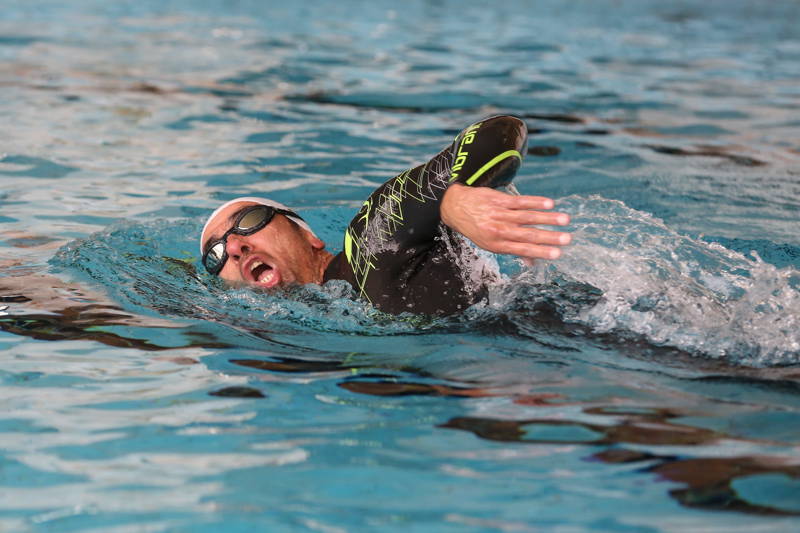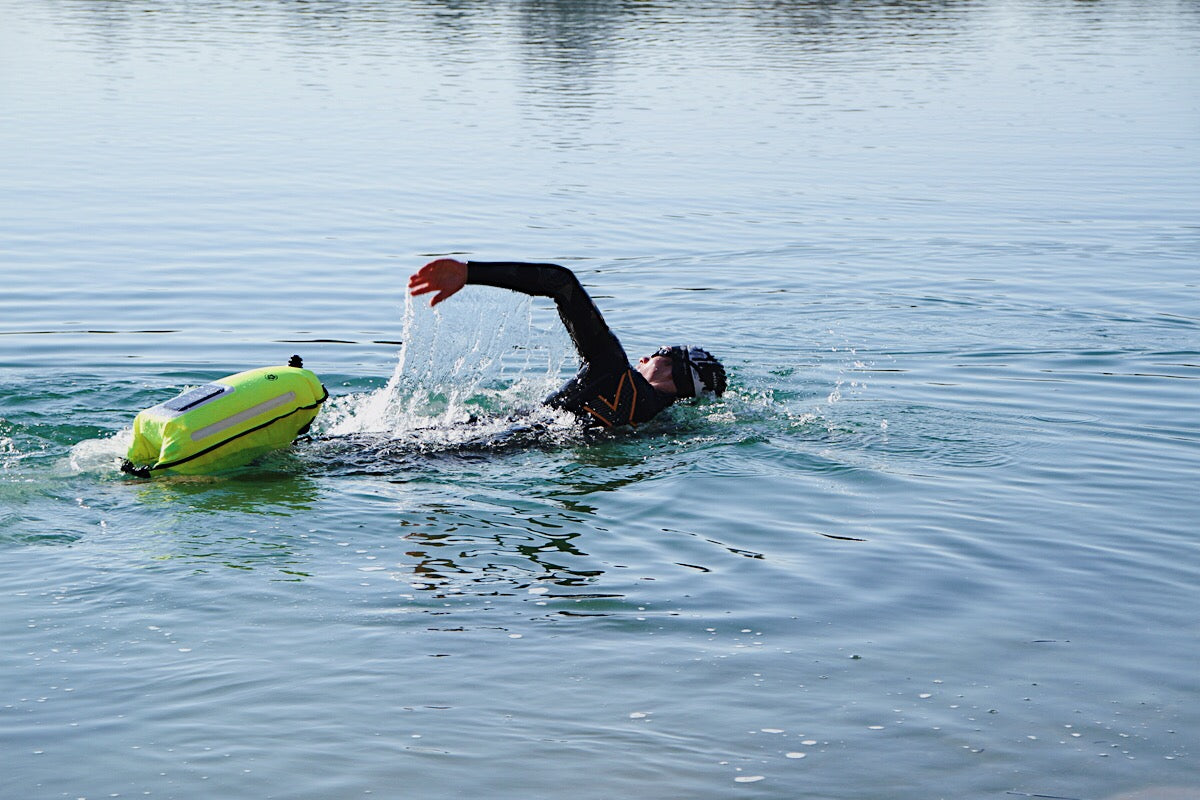Just get in the water, move somehow and go! This is an approach commonly seen in swimming, but unfortunately it is quite inefficient. Especially when it comes to freestyle swimming, the technique is of great importance in order to move economically and quickly in the water. Body rotation is an important part here, as it lengthens your glide phase, gives your pull more power, and increases your speed. Here you get 2 exercises how you can improve your rotation and what you have to pay attention to.
If you look at good freestyle swimmers, you will notice that they never lie flat in the water for long, but constantly rotate around their longitudinal axis. In addition to the advantages mentioned above, this improves the position in the water, allows you to bring your arms back more relaxed with high elbows and at the same time makes breathing easier. But if you use the wrong technique, it can happen that the arm drops too early and the gliding phase is abruptly ended as a result. To avoid this, let's start with the exercises.
Exercise 1 - Glider Arm Extension
Here you only have to concentrate on your glider arm. As soon as it dives into the water, you have to try to push it forward as far as possible. If you think you can't go any further, then stretch your fingertips a little further towards the water surface and you'll feel how your pull and your gliding phase have significantly lengthened.
Exercise 2 - The rotisserie chicken
As with the exercise's namesake, the focus here is on your longitudinal rotation. Make sure your buttocks and stomach don't sag while performing this exercise. Lie on your stomach and begin with a steady leg kick that steadily propels you forward.
Your arms are stretched out in front. Now initiate a 90 degree turn into the side position and raise your forearm to the height of your elbow. Now turn your hips further until you have reached the side position and notice how the front arm is automatically guided forward and slides there. During this position, the leg kick continues to lead for propulsion and you have enough time to catch your breath, counter-rotate into the prone position, and bring your front arm back with your elbow high.
Forego aids
This point may bother some of you a bit. However, pull buoys, while pleasantly relieving the legs, prevent a good rotation as it is very tiring with the buoys between the legs and requires a lot of focus on arms and rotation. That's why most then choose the lighter version and do without the rotation, but this worsens your general technique.
Fins can help
One tool that can actually improve your rotation is short fins. This gives you more propulsion just from kicking your legs, allowing for increased focus on arms and rotation while training your leg muscles. But: At first, don't swim more than 600 meters with fins, because the muscles have to get used to the greater strain.
training schedule
- 300m easy swim
- 100m backstroke (make sure you are in a good position in the water and have a relaxed kick)
- 200m 5 moves backstroke and 5 moves freestyle (watch your spin)
- 200m easy crawl swimming
4 x 100m, of which 50m technique and 50m whole layer
- Departure swimming and pay attention to rotation from the hips
- Tee off and pay attention to rotation while pushing the arm forward
- 2 rounds free tee, but focus on rotation
200m easy crawl
Count 6 x 50m arm strokes and reduce by one per lane (tip: more legs, better rotation, ...)
100m easy back, again focus on water position
Swim 200m easily
Find the right swimming goggles
A huge selection of swimming goggles for indoor and open water.




















